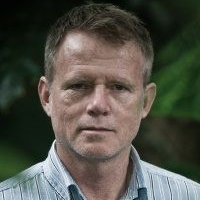Dynamic Amazonia: Lessons for a Changing World
A special issue of Land (ISSN 2073-445X). This special issue belongs to the section "Land Systems and Global Change".
Deadline for manuscript submissions: closed (30 November 2021) | Viewed by 16480
Special Issue Editors
Interests: economic, environment, and development geography; livelihoods and poverty; geographies of resistance, coupling human and natural systems ; agrarian reform; land grabs; political economy of environmental change
Interests: human-environment interactions; land change science; GIS/Science; applied quantitative methods; Latin America
Special Issues, Collections and Topics in MDPI journals
Interests: Brazilian Amazon; cattle supply chain; deforestation; rural land tax
Special Issue Information
Dear Colleagues,
Amazonia is critical to the global environment given its store of biodiversity and its repository of carbon. Since the mid-20th century, the Amazonian countries—particularly Brazil, Ecuador, Peru, and Bolivia—have implemented a variety of infrastructure projects with the intention of tapping into the region’s resources and opening it to human settlement. Consequently, a large fraction of the forest has been converted for agricultural use. At the same time, human populations have grown precipitously to more than 35,000,000 people, many of whom live in an expanding network of urban areas that span the basin. There is little doubt that development has transformed the region’s environment and put the heritage of its indigenous peoples at risk.
Despite global concerns for maintaining Amazonia’s ecological and cultural integrity, the South American nations continue to prosecute a coordinated program of infrastructure development to transform the region into a multimodal transportation hub with integrated highways, waterways, railways, and ports, and a continental source of hydropower sufficient to electrify industrial development. The development vision is to industrialize their economies and dramatically expand the region’s engagement in global commodity markets in order to enhance economic prosperity of the nation as well as social welfare improvements for Amazonia’s resident population. However, development on a grand scale presents a challenge to Amazonian conservation, especially given the ecosystem stresses that will come with global climate change. Such change will also challenge the cultural integrity and livelihoods of indigenous and traditional peoples who depend on the region’s vast natural resources for their survival.
Amazonia is a dynamic region on the verge of dramatic anthropogenic change. What will happen to its remaining ecosystems and traditional peoples? What will happen to those who came as colonists and worked hard to establish frontier livelihoods? The purpose of this Special Issue is twofold. First, we seek research contributions that discuss Amazonia within a broad context, placing it within a globalized world system. We argue that scholarship from this point forward must make efforts to reflect the region’s dynamics and to situate them within global processes and networks. Second, we seek papers that provide insight into the many possible Amazonian futures, which is necessary to better prepare for the changes that are coming.
Dr. Cynthia Simmons
Dr. Eugenio Arima
Dr. Ritaumaria Pereira
Prof. Dr. Robert T. Walker
Guest Editors
Manuscript Submission Information
Manuscripts should be submitted online at www.mdpi.com by registering and logging in to this website. Once you are registered, click here to go to the submission form. Manuscripts can be submitted until the deadline. All submissions that pass pre-check are peer-reviewed. Accepted papers will be published continuously in the journal (as soon as accepted) and will be listed together on the special issue website. Research articles, review articles as well as short communications are invited. For planned papers, a title and short abstract (about 100 words) can be sent to the Editorial Office for announcement on this website.
Submitted manuscripts should not have been published previously, nor be under consideration for publication elsewhere (except conference proceedings papers). All manuscripts are thoroughly refereed through a single-blind peer-review process. A guide for authors and other relevant information for submission of manuscripts is available on the Instructions for Authors page. Land is an international peer-reviewed open access monthly journal published by MDPI.
Please visit the Instructions for Authors page before submitting a manuscript. The Article Processing Charge (APC) for publication in this open access journal is 2600 CHF (Swiss Francs). Submitted papers should be well formatted and use good English. Authors may use MDPI's English editing service prior to publication or during author revisions.
Keywords
- Amazon
- neoliberal reform
- industrial development
- neoliberal conservation
- deforestation
- mega infrastructure development
- IIRSA
- indigenous rights
- land conflict
- environmental degradation
- globalization








